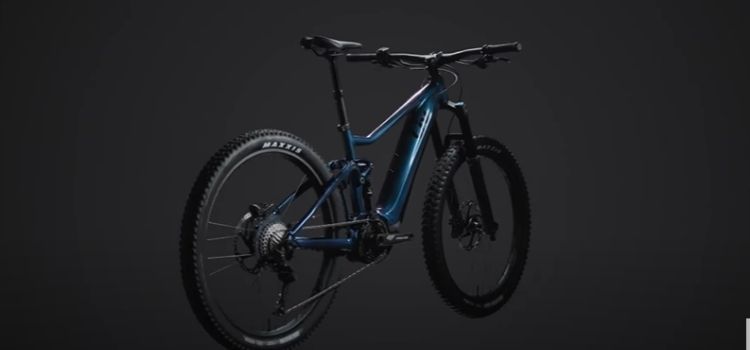Why Are Electric Bikes So Expensive?
As an Amazon Associate I earn from qualifying purchases.
The surge in popularity of electric bikes (e-bikes) has been undeniable, transforming the way people commute and experience cycling. However, a common question lingers among potential buyers: why are electric bikes so expensive?
In this article, we will delve into the intricacies of e-bike pricing, exploring the various factors that contribute to their higher cost compared to traditional bicycles.

The Dual Nature of E-Bikes
At their core, e-bikes are not just bicycles; they are a fusion of traditional biking and cutting-edge consumer electronics. This dual identity significantly impacts the overall cost of manufacturing, as both material costs and technological sophistication come into play. To better understand the pricing structure, let’s break down the key components of an electric bike.
1. Display Technology
Imagine the display on an e-bike as hosting technology comparable to that found in early digital watches or even smartphones. The integration of advanced display technology adds a layer of cost that traditional bicycles do not have. The sophisticated user interfaces and connectivity features contribute to the overall pricing of e-bikes.
2. Battery Complexity and Material Costs
The heart of any electric bike lies in its battery. E-bike batteries are comprised of numerous individual cells, a battery management system, and additional components to ensure safe operation. Notably, the materials used in lithium-ion batteries, including cobalt and lithium, are among the world’s most sought-after resources. Geopolitical tensions, limited availability, and long-distance shipping contribute to higher costs in this crucial component.
The supply chain for battery materials often spans the globe, with concentrations in regions such as the salt lakes of South America or mines in Australia, Canada, China, and Zimbabwe. Political and economic factors, such as the Taiwan Strait tensions, can disrupt the supply chain, potentially leading to supply shortages and price spikes.
3. Competition for Battery Materials
The demand for battery materials is not exclusive to the e-bike industry. The automotive and consumer electronics sectors are also significant players in this market. The e-bike industry finds itself competing for resources with well-established sectors like mobile phones and laptops, which have established supply chains and scales. This heightened competition further contributes to the overall cost of e-bike batteries.
4. Motor Complexity
Consider the intricate design of the latest e-bike motors, exemplified by high-end models like the Pinion motor with an integrated gearbox. The engineering complexity involved in designing and manufacturing these motors adds a substantial cost. Even if we assume that a given e-bike motor is only half as complex, the engineering demands are still substantial, impacting the overall price of electric bikes.
External Factors Influencing Cost
Apart from the core components, several external factors play a role in determining the price tag of electric bikes.
1. Currency Fluctuations and Import Tariffs
The global nature of manufacturing and supply chains exposes e-bike producers to currency fluctuations and import tariffs. These uncertainties can significantly affect the cost of imported components, contributing to the final retail price.
2. Shipping prices and labor costs
The transportation of e-bike components and the assembly process incur shipping costs and labor expenses. These costs add up throughout the supply chain, influencing the final price that consumers see.
3. Raw Material Price Movements
Fluctuations in the prices of raw materials, including metals and composites used in e-bike construction, can impact manufacturing costs. Suppliers often adjust prices based on the market value of these materials, further affecting the overall pricing of e-bikes.
4. Brexit Impact
For the UK market, Brexit has introduced complexities in the supply chain. The majority of e-bikes are imported, and any additional fees, customs charges, or disruptions in the supply chain due to Brexit can contribute to higher prices for consumers.
5. Anti-Dumping Tariffs on Chinese E-Bikes
Europe’s imposition of anti-dumping tariffs on Chinese electric bikes has disrupted the supply chain, limiting the availability of more affordable options. This restriction has ramifications for the overall market, affecting both supply and demand.
6. Oversupply and discounting
Incorrect forecasting during the pandemic-induced surge resulted in an oversupply. Suppliers and manufacturers, anticipating sustained high demand, ramped up production. When demand dropped post-lockdowns, a surplus of bikes flooded the market. To address this oversupply, suppliers resorted to discounts, promotions, and sales, creating an environment where some businesses struggle to make profits.
7. Cost of Living Crisis
The aftermath of the pandemic, compounded by external factors such as the Russian invasion of Ukraine, contributed to a cost of living crisis. Items perceived as luxuries, including electric bikes, saw a decline in demand. Oversupply and reduced demand created a challenging situation for manufacturers and retailers.
Conclusion: The Current Landscape and Opportunities for Buyers
As we navigate through the complex web of factors influencing the pricing of electric bikes, one thing becomes evident: the current market presents unique opportunities for prospective e-bike owners.
Warehouses are now brimming with excess stock, and suppliers are eager to address the oversupply issue. For consumers, this translates into unprecedented discounts, promotions, and sales. As the industry grapples with the aftermath of the pandemic, savvy buyers can capitalize on this situation to acquire e-bikes at significantly lower prices than in previous years.
In the grand scheme of transportation expenses, e-bikes prove to be cost-effective once purchased. While the upfront cost may seem steep, the long-term savings in transport expenses, combined with the current market dynamics, make e-bikes a compelling and valuable investment.
As we witness a unique confluence of global events shaping the e-bike market, prospective buyers have the opportunity to join the growing community of e-bike enthusiasts at a fraction of the usual cost. The answer to the question, “Why are electric bikes so expensive?” becomes a multifaceted exploration of industry intricacies, external factors, and the current market landscape.
Related Article
Read: Can Electric Bikes Be Used Manually?
Learn How To Change A Tire On An Electric Bike
Read How To Charge Ebike Battery Without Charger?
Read Can I Take My Electric Bike On The Train?
Amazon and the Amazon logo are trademarks of Amazon.com, Inc, or its affiliates.






